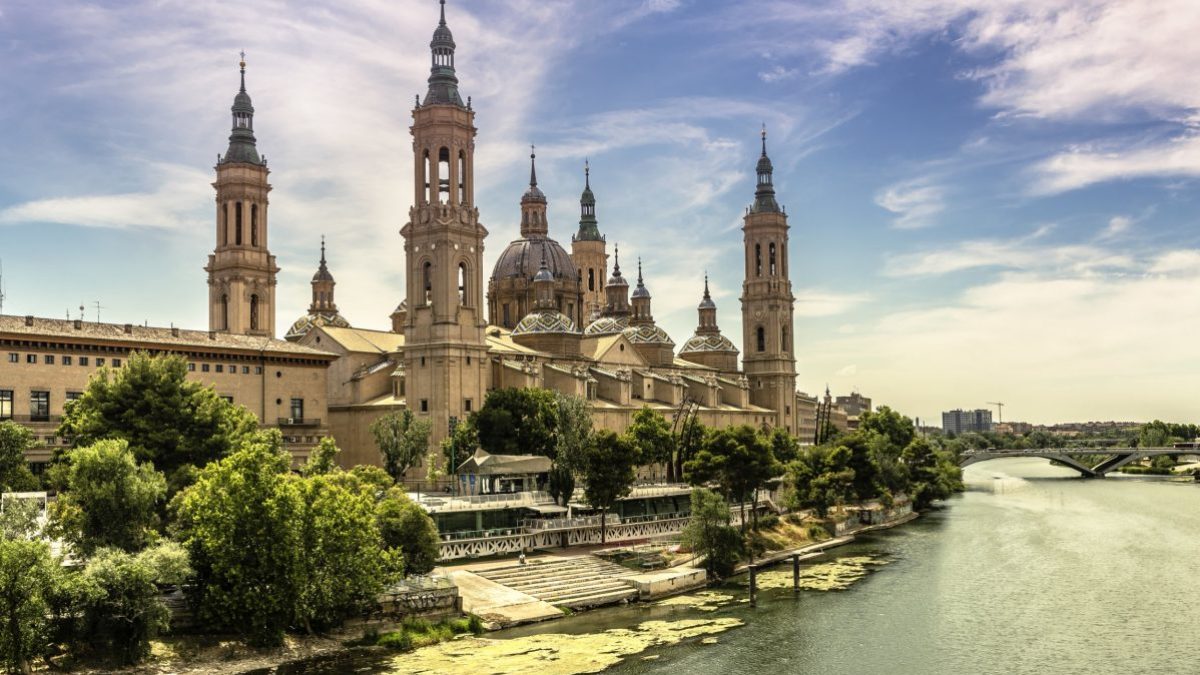I’ve spent an enviable amount of time in Spain. The truth is, I’ve seen more of the country than most Spaniards. From lush northern pastures to the desert-strewn south, there’s barely a corner of this seductive land I haven’t eaten, drunk or clicked a castanet in. So why, then, do I continually return to Zaragoza?
In essence, it’s always a thrill to discover something that wasn’t meant for you. Zaragoza gives me that feeling in spades. It’s just getting on with the job, minding its own business – and sometimes the most compelling places are the ones that couldn’t care less about compelling you.
Halfway between Madrid and Barcelona, Zaragoza is Spain’s fifth-largest city and the capital of Aragon, yet it exists in a curious blind spot for international travellers.
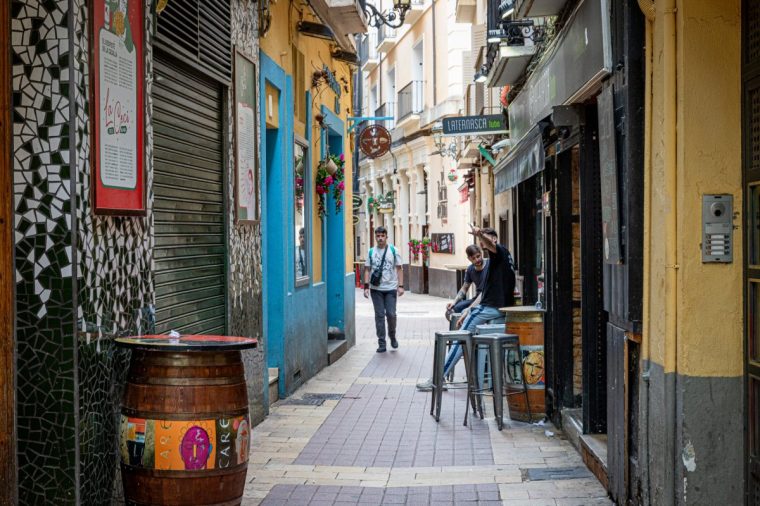 The old town of Zaragoza, a city that was known as Caesaraugusta during the Roman era (Photo: Sami Auvinen/Getty)
The old town of Zaragoza, a city that was known as Caesaraugusta during the Roman era (Photo: Sami Auvinen/Getty)
This former Roman colony, once known as Cesaragusta, offers a distilled essence of Spain without the exhausting crush of tourism that plagues its more famous counterparts. It’s a city that somehow remains deliciously uncrowded, despite possessing architectural riches that would cause stampedes elsewhere.
The Basilica del Pilar is a case in point. While Santiago de Compostela’s cathedral lures crowds with its pilgrimage pedigree, Zaragoza’s baroque masterpiece sits quietly by the River Ebro, its domes reflected in water that’s more acrid than azure.
Inside, locals light candles under Goya frescoes with the same casual efficiency they’d apply to buying milk. It’s a vast aerodrome of devotion and a salient reminder of Spain’s conspicuously Catholic past.
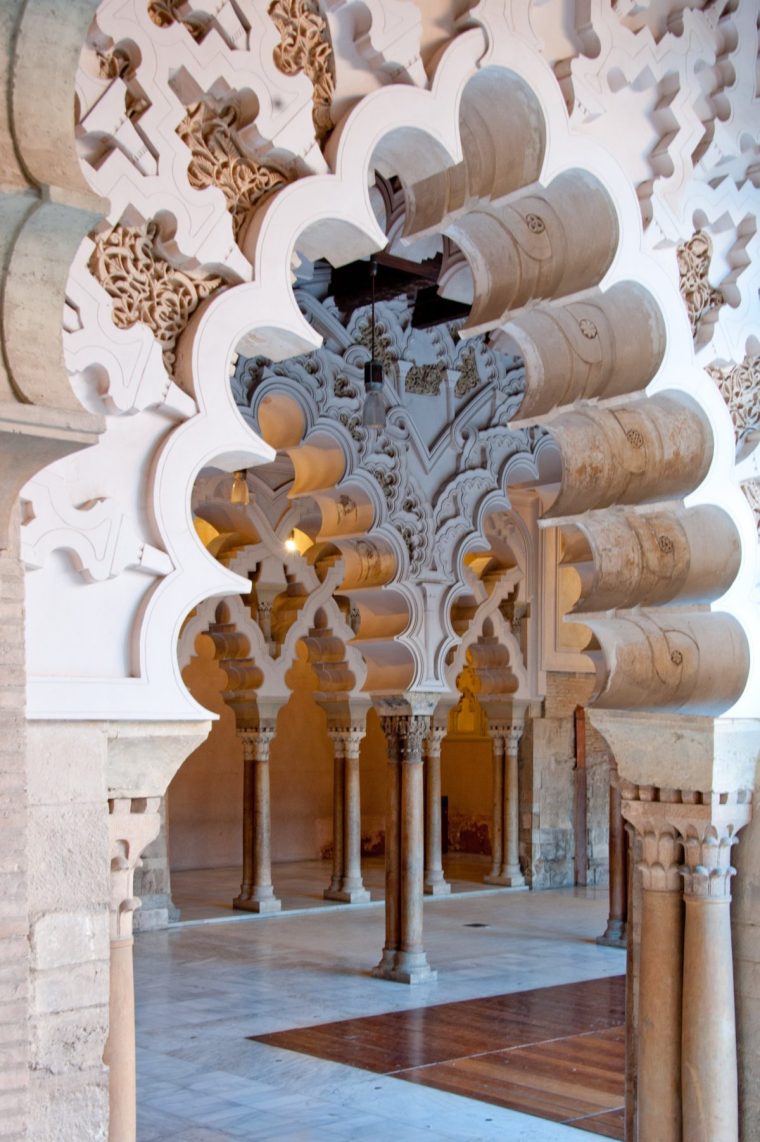 A carved entrance to the Aljaferia Palace (Photo: Asier/Getty)
A carved entrance to the Aljaferia Palace (Photo: Asier/Getty)
The layers of history are tangible. You can trace Roman footsteps at the Museo del Teatro Romano, then pivot forward a millennium at the Islamic Aljafería Palace, a fairytale fortress whose honeycombed arches and delicate stucco work rival Granada’s Alhambra. Go early enough and you might even have the place to yourself.
“Ten years ago, people stopped for lunch, maybe,” says waitress Elena at El Real bar, presenting me with a reassuringly cold local Ambar beer. “Now they stay for days.”
Gesturing across the vast Plaza del Pilar – the largest in Europe after St Peter’s Square in Rome – she’s optimistic about the city’s future. “We’re almost like Spain’s secret handshake. Suddenly, Zaragoza is no longer a layover; it’s the escape.”
I’ve been escaping here for years. My partner lives in Caspe, a modest town in the wider region, so Zaragoza feels like the closest point of culture in a fairly barren patch of land. Recent improvements, such as better transport links and a clutch of fantastic restaurants, only make it better.
At the heart of the city’s evolution is Natalia Chueca, the engaging, perma-smiling mayor. “What truly sets us apart is the combination of human scale, high quality of life and the ambition of its people,” she tells me. “We are building a city that is sustainable, digital and connected, but also deeply proud of its roots.”
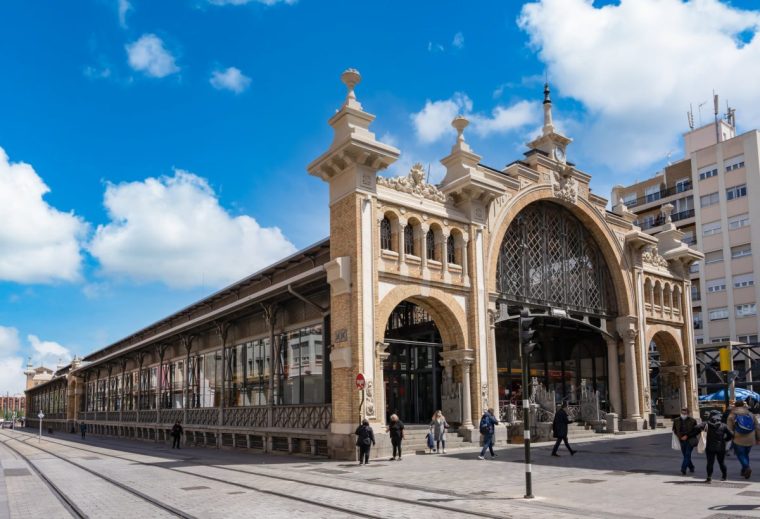 The art nouveau Mercado Central de Zaragoza (Photo: ivotheeditors/Getty)
The art nouveau Mercado Central de Zaragoza (Photo: ivotheeditors/Getty)
Despite the hi-tech ambitions, this remains Spain without filter. At the art nouveau Central Market, vendors call out prices for vegetables I can’t identify, while elderly women inspect tomatoes with the intensity of sommeliers. If the chips are digital, they’ll still come smothered in bravas sauce.
And then there’s the El Tubo district, a fragrant, labyrinthine pocket of medieval Zaragoza that never sold its soul. Here, tapas bars cling to alleyways barely wide enough for conversation.
At El Meli, a smart, adventurous joint manned by handsome waiters, I’m fed small plates of counterintuitive wonder that would make Madrileños green with envy.
The standout dish is a strange thing indeed: cave ovum are crunchy sacks of filo pastry, filled with a runny carbonara sauce made from egg, bacon and, unusually, ground-down pork scratchings.
While these little morsels are solid enough on the fork, they explode in the mouth – and they’re surprisingly tasty.
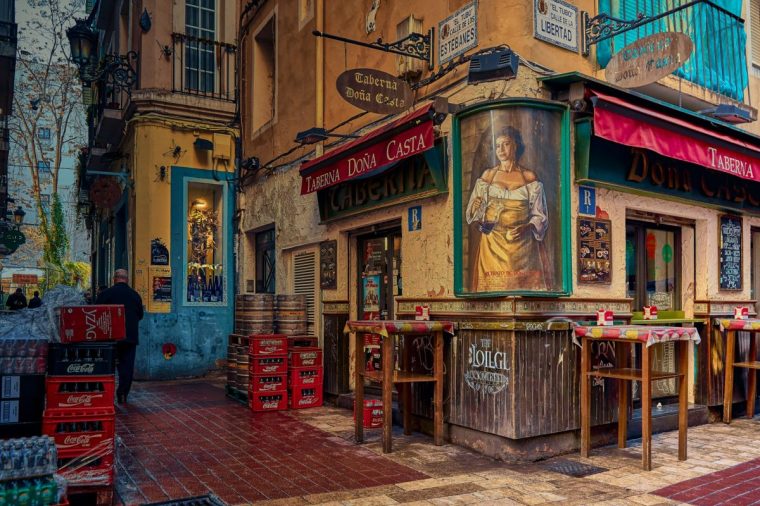 El Tubo is a network of narrow streets where you’ll find tapas bars (Photo: Jose Luis Zueras Marco/Getty)
El Tubo is a network of narrow streets where you’ll find tapas bars (Photo: Jose Luis Zueras Marco/Getty)
Things take a surreal turn when the area, like the whole country, suddenly experiences a nationwide power outage. Despite the unprecedented circumstances, no panic ensues, just quiet laughter and impressive calm. “No pasa nada,” a man beside me shrugs, telling me it’s no problem, raising his glass. “The wine still works.”
I stumble into El Truco, a gluten-free tapas bar and seemingly the only place in the city with a gas stove. In the kitchen, béchamel-oozing croquetas sizzle in near-darkness, lit only by the chef’s iPhone. This is Spain at its most resourceful, where red wine and a shred of ham cure all of life’s ills.
With that in mind, I honour the day with a glass of chilled Garnacha in Plaza de San Felipe, one of Zaragoza’s hidden plazas, where blossom falls like confetti. Squint and it could be sun-dappled Paris in the 1940s.
Ultimately, it’s the Zaragozanos themselves who shape the city’s character. Known across Spain for their fierce independence, they embrace what’s known as terquedad – a type of hard-headed stubbornness that refuses to bow to convention. I’ll be back soon, stubbornly smitten, power bank at the ready.
Getting there
Ryanair operates direct flights from Stansted to Zaragoza. Trains from Madrid take around one hour 20 minutes.Staying there
Hotel Palafox in the city centre has doubles from £70.More information
Rutica 41 offers walking tours of old Zaragoza and El Tubo tapas trail.
zaragoza.es
